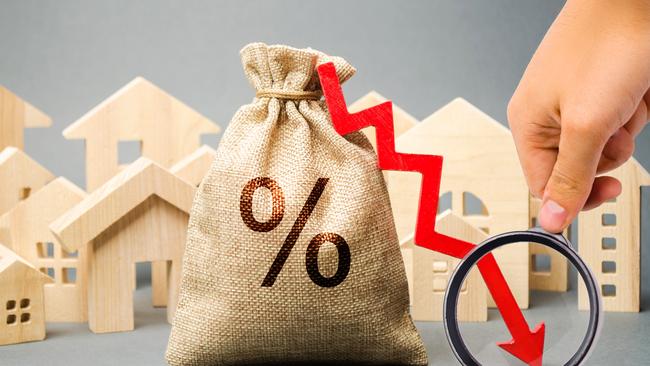Inflation down, interest rates still up: why we’re not yet moving
You have every right to feel confused about what’s going on with interest rates. Here’s why Australia isn’t following other countries’ cuts – yet.

Business
Don't miss out on the headlines from Business. Followed categories will be added to My News.
The most surprising thing about last week’s Australian Bureau of Statistics inflation figures was not that annual CPI had fallen back under 3 per cent – a huge drop from our horror December 2022 number of 8.4 per cent.
And it was not that the Reserve Bank of Australia looks no closer to cutting interest rates despite the US, Europe, Britain, Canada and many other places pushing out rate cuts.
For me, the most surprising factor of the monthly Consumer Price Index Indicator data was the huge impact government handouts have had on official inflation. State based electricity rebates combined with the federal government’s $75 quarterly electricity bill discounts – for everybody – to push electricity prices down 17.9 per cent in the year to August 2024.
When Treasurer Jim Chalmers announced the $300 annual electricity credits in his budget earlier this year, he seemed pleased with himself that the policy would push down official inflation.
And it has. A 17.9 per cent fall in one CPI component will always bring down the overall annual inflation figure.

The big problem is that the Reserve Bank of Australia and economists see right through this government-engineered inflation game.
For starters, RBA governor Michele Bullock and her board don’t focus on the headline inflation figure when deciding to raise or cut interest rates. They use the “trimmed mean” measure of inflation, which ignores volatile items such as energy and is still 3.4 per cent, well above the RBA’s 2-3 per cent target range.
Ms Bullock reiterated last week that the cash rate is the only tool the RBA has to impact inflation. It raises the cash rate to lower CPI by reducing consumer spending and overall demand in the economy, as it has done with 13 rate rises since May 2022.
Conversely, cutting interest rates – which many countries are already doing – aim to support spending and inflation.
And it’s clear that governments cannot try to trick the RBA by lowering inflation artificially. Unless the federal government continues spending billions of bucks annually on recurring electricity bill credits, their removal will eventually send electricity prices higher.
It’s silly to hear the government complaining that it is working to lower inflation pressures when it is clearly pumping extra money into the economy, which fuels demand and inevitably higher inflation.
It’s even sillier to hear the Greens holding the Albanese government to ransom by refusing to support other legislation unless the government forces the independent RBA the cut rates. To quote a former Labor Prime Minister, fair shake of the sauce bottle, mate!
All this government and RBA argy bargy is a sideshow to the real problems facing households: mortgage repayments that have jumped 60-plus per cent in Two-and-a-half years, surging rents and other living costs, and expensive loans and other bills that have smashed business owners.
The good news for borrowers is that rate cuts are coming, albeit not as fast as in the US and elsewhere, where inflation is much lower than it is in Australia.
Most economists believe RBA rate cuts should start in the first few months of 2025, with several pencilled in for next year. Just like we imported higher inflation amid global supply squeezes following the pandemic, we should import lower global inflation too.
Our relatively high interest rates keep the Aussie dollar strong, which also puts downward pressure on inflation and interest rates.
Borrowers – both business and households – just need to get through the next few months before long-awaited relief arrives.
More Coverage
Originally published as Inflation down, interest rates still up: why we’re not yet moving





